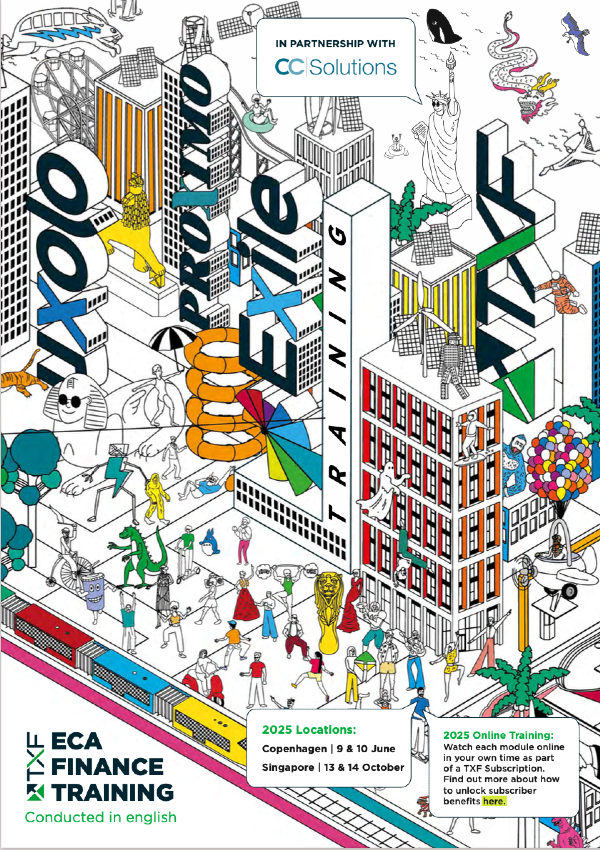Expert briefing: Stormy waters ahead for global trade and shipping
The maritime industry’s growing regulatory complexities and lengthy paper-based loan application procedures are convoluting access to trade finance for corporates in the sector. But can digitisation raise the levels of compliance and put an end to sanction headaches and shipment delays?

The shipping industry has long served as the backbone of world trade, transporting and delivering around 80% of goods that cross international borders daily. The vast range of goods being transported, compounded by the many actors in relevant industry supply chains and regulatory change, are making this process increasingly complex.
Judging by the 2019 sanctions landscape, it was widely expected that 2020 would bring increased regulatory complexity, a wider geographical remit, and increased focus from regulators. The immediateness of heightened geopolitical tensions within the first week of January, particularly between Iran and the US, undoubtedly proved this.
The regulatory landscape has long been guided by the geopolitical climate. Over the past few years, sanctions developments have centered around Iran, Syria, North Korea, Venezuela and Russia with sanctions breaches causing several vessel standoffs across the globe. Most recently, on 23 January 2020, it was announced that the US Treasury department had blacklisted four companies across Hong Kong, Shanghai, and Dubai for allegedly facilitating and supporting Iran’s petrochemical and petroleum exports. Another highly publicised instance involved the Iranian oil tanker Grace 1. The tanker was seized off the coast of Gibraltar by British Royal Marines for several days, on suspicion of breaking European sanctions against Syria. More recently, subsidiaries of Cosco Shipping were added to the Specially Designated Nationals (SDN) blocked entity list for transporting Iranian crude oil after the US re-imposition of sanctions. Following this, Secretary of State Mike Pompeo set the tone for 2020, claiming that the US is “telling [...]all nations: [...] we will sanction every violation of sanctionable activity”.
Who is affected by maritime trade regulations?
Gone are the days where the control processes of financial institutions were a main focus of regulators. Maritime trade has become a regulatory focal point predominantly due to its potential to generate alternative revenue streams for states whose banking sectors are excluded from the global economy. With 80% of world trade travelling by sea, regulators are considering it as the principal means of moving sanctioned and embargoed goods. This, alongside its massive scale, places all relevant members of the global maritime supply chain at risk of punitive action, including international trading companies, ship owners, bunker providers, maritime insurers, and governments and flag administrations, among others. As regulatory compliance standards continue to tighten, so does the strength of the technology-enabled compliance processes used by all parties involved in a transaction. Clearly, if all parties involved in a transaction play their part in ensuring compliance, the cause and effect will be far greater than we have seen in previous years when regulators were primarily focused on the banking and financing industries.
Regulatory impact on trade finance
As well as falling under the regulatory microscope, the financing of maritime-based trade is costly and therefore requires financing. The success of maritime trade depends upon the accessibility of affordable trade finance, which underpins between 80-90% of global trade. While necessary in the current geopolitical climate, the increased regulatory scrutiny is presenting a considerable barrier between trade and small-to-medium sized enterprises (SMEs), particularly in countries with limited financial markets. Moreover, in developed countries, there is a heightened perception of regulatory risk from developing countries, particularly since the adoption of new anti-money laundering and counter-terrorist financing regulations.
Presently, both the corporates applying for trade finance and trade financing banks have to deal with a fast-paced regulatory landscape, a lack of standardisation around global sanctions regimes, a lack of interoperability, limited resource allocation towards their compliance processes, and a traditionally paper-based industry leaving room for error and fraud.
Alongside these issues, a recent survey found that 76% of responding banks reported anti-money laundering (AML) and know-your-customer (KYC) regulations to be major obstacles to expanding their trade financing operations.
Without a streamlined compliance process, the increasingly complex regulatory landscape prolongs the processing of transactions, resulting in many out-of-date sanctions checks that increase trade finance rejection rates. According to a global survey conducted by BNY Mellon and the International Chamber of Commerce (ICC), these rejections are increasing in over 30% of institutions, with compliance specialists reaffirming that compliance constraints are the primary cause. Transaction processing stands to become even more complex if left as is when the time comes for banks to begin reporting on rejected transactions - a development that seems to be on the horizon.
On the lookout for red flags & documentary fraud
Regulatory risk can be associated with various aspects of a trade transaction: the goods being traded, the buyers and sellers, the cities and ports along the shipping route, and the shipping vessels themselves. Between just July 2018 and July 2019, the number of OFAC-sanctioned vessels soared from 221 to 583. The main issues that lead to rejected maritime-based trade finance transactions are:
- A ship being placed on a watchlist for previous illicit or suspicious activity
- A ship’s port call history, placing it in sanctioned waters
- A ship’s owner being from (or associated with) a sanctioned country
- A ship’s operating company being on a watchlist
Looking beyond the vessels involved in maritime trade, their movement history and ownership brings us back to the fraud-prone aspects of its financing. On average, a cross-border trade finance transaction requires the exchange of 36 documents and 240 copies. Trade documentation is still highly paper-based, with shipment delays lasting for days rather than hours while documents are processed via data entry-type paperwork. Each data entry site presents a potential point of failure, exposing the industry to fraud and human error.
Some methods of manipulating the predominantly archaic trade financing system involve exploiting the most established and well-known methods, leading to activity like invoice fraud and double financing. As more preventative solutions have developed, new fraudulent methods have emerged, a popular one includes bills of lading (BL).
A BL is a legal document issued by a carrier to a shipper, detailing the type and destination of the goods being carried and serves as a shipment receipt when the carrier delivers the goods. Financial institutions rely on BLs and associated documentation when making decisions regarding financing a transaction. As BLs were entirely paper-based until recently, they were easy to copy, manipulate, and forge. The efficient use of BLs is reliant on standardised global adoption, which has unfortunately never been successful to date. While the introduction of electronic bills of lading (eBOL) has helped reduce documentary fraud, they are not impenetrable and can be hacked, leading to similar types of fraud as faced by paper BLs.
How can these risks be mitigated?
Over the past year, we have seen OFAC publish a framework for compliance commitments, marking one of the first times a regulator has published prescriptive guidance. This document emphasises the importance of having a full compliance program in place, with management backing, comprehensive risk assessment, internal controls and audits, and extensive training. In a 2019 advisory to the maritime petroleum shipping community regarding Syria, OFAC listed several risk mitigation measures:
- Strengthening Anti-Money Laundering/Countering the Financing of Terrorism (AML/CFT) compliance
- Monitoring for AIS manipulation
- Reviewing all applicable shipping documentation
- Clear communication with international partners
- Leveraging available resources
Meanwhile in 2019, the Wolfsberg Group published a new version of its Trade Finance Principles, where several control mechanisms were outlined. These include rigorous customer due diligence processes, name screening to reduce false positives, staying up to date with relevant UN resolutions, and ensuring that proper export controls are in place.
The importance of technology cannot be under emphasised when it comes to mitigating regulatory risk while financing maritime trade. Technology solutions are the key available resource highlighted by OFAC and can assist in most, if not all, of the proposed controls from OFAC and the Wolfsberg Group.
Beyond risk mitigation; a digitised future
Presently, banks are spending 10-20% of operating costs on remaining on the right side of regulators. With the enormous number of transactions that need to be screened, banks, trading companies, insurers, and corporates are continuing to recognise that there are more intelligent ways to raise levels of compliance and keep at pace with the most complex regulatory landscape the world has ever seen. Systems that can automate and streamline processes will dominate this sector, specifically systems that can automate the required collation of data with minimum manual input, while generating auditable records for internal and external use.
However, the benefits do not stop at risk mitigation. The uptake of technology has contributed to the slow but steady elimination of paper from the processing of trade finance transactions, which has the potential to reduce output time by several hours per transaction. When combined with the appropriate application of technology to compliance processes, this could cut compliance costs by 30% or more.
Moreover, trade digitisation is expected to provide several larger-scale benefits too. By speeding up the process and minimising manual elements, the cost of transaction processing will be lowered, subsequently reducing the cost of trade financing, while enabling goods to move faster and more cheaply through supply chains. By 2035, the World Trade Organisation estimates that technological progress will have the largest impact on increasing GDP levels. Looking at Asia-Pacific countries, the full digitisation of trade paperwork has the potential to increase their countries’ exports by $275 billion annually.
While the maritime industry has been slow to digitise, the pace of evolving regulatory technologies has been much faster and has begun pointing compliance and operations departments to the key transactions that need their attention. With the future holding a wider, more complex global sanctions web and a focus across all associated members of the supply chain, the entire industry behind global maritime trade and its financing have to act quickly to ensure best practice.





